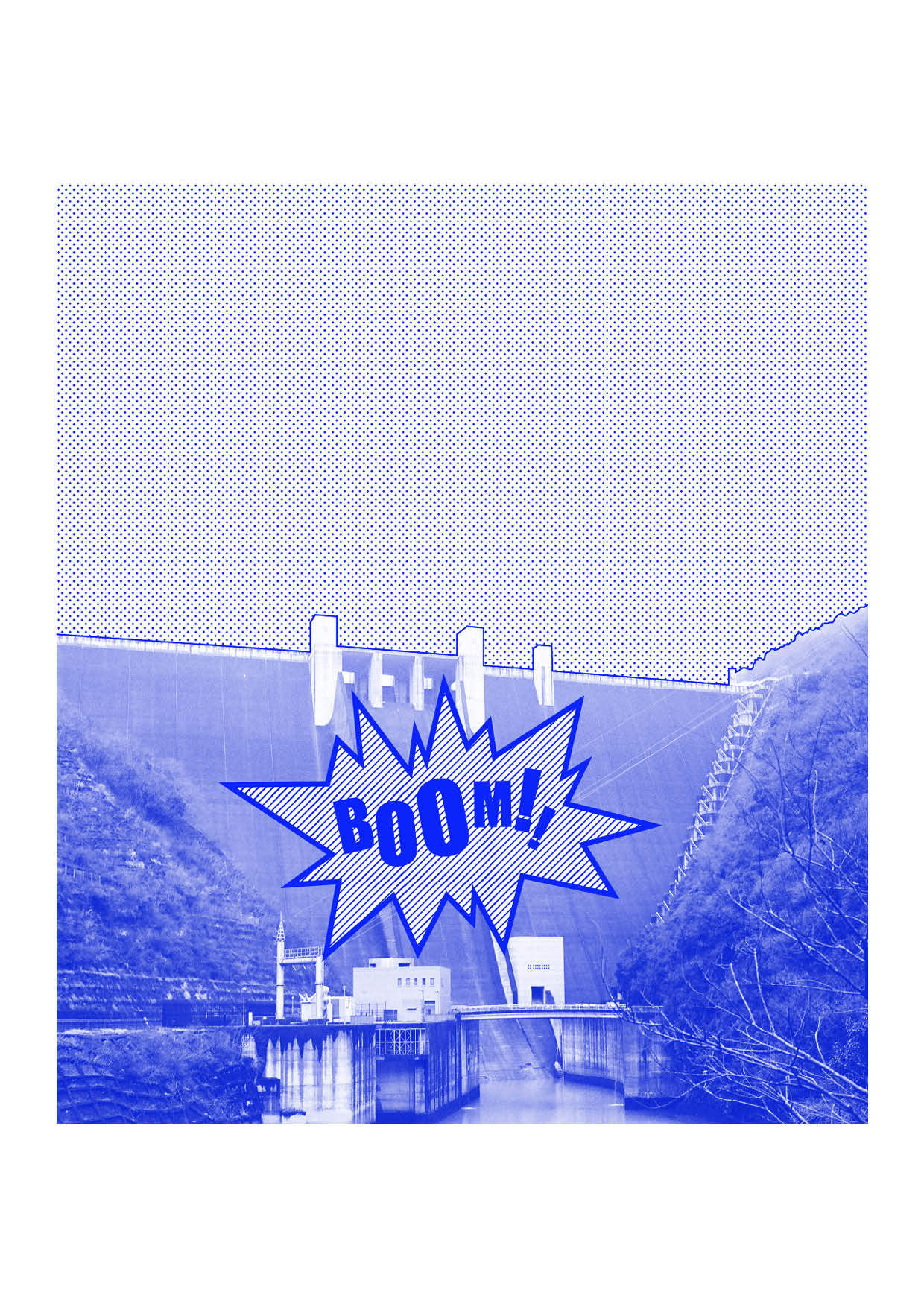
Undamming
Failure of a system, Hydro Power, Generation, National, Local, Construction, Economy, Governance, Illustration
It is the act of removing a dam from a river, of removing an obstruction, physically or figuratively. Dam removal is the process of demolishing a dam, leaving a river to flow freely. It is undertaken for a variety of reasons that include environmental rehabilitation, structural weakness and maintenance expense. The Arase Dam is the first case of dam removal in Japan. Located at about 20 kilometers upstream from the river mouth, it was built exclusively for hydroelectric power generation.
June 2002. A river fishermen's union in former Sakamoto Village called for establishment of an association to reconsider the validity of the Arase Dam. This was the start of a full-scale campaign for decommissioning and removal.
March 2004. Kumamoto Prefecture decided to decommission and remove the Arase Dam because the local council had submitted an opinion brief that requested dam removal in response to local residents' complaints about adverse effects of the dam. Ever since the Arase Dam was built, the local residents in former Sakamoto Village have been aware of certain effects of the dam, such as vibrations and fewer sweetfish (or ayu in Japanese) in the river.
February 2010. Kumamoto Prefecture finally decided to decommission and remove the Arase Dam, stating, "Keeping the dam is no longer an appropriate option, as it would prolong confusion within the prefecture."
April 2010. It created an R&D committee for technologies to remove Arase Dam and started formulating a removal plan for the deconstruction work.
The residents who had suffered from the negative impacts of the dam were finally rewarded for their long-continued efforts toward its removal. Nevertheless the Arase Dam removal represents the failure of a system, which is not related to natural disasters such as earthquake in the case of Fujinuma Dam in 2011, in Japan, or floods in the case of Malpasset Dam in 1959, in France. The dam was removed because it did not match the quantity of energy it was expected to produce. This is the failure of human prevision, of engineering, of logistic and technological skills, even worse, it is the Japanese failure! After the removal, Kumamoto Prefecture proclaimed it would make the Arase Dam an example for the nation of addressing actual removal of concrete dams. This would entail a number of challenges such as ensuring safety, establishing the necessary decommissioning and removal technologies, and minimizing environmental impacts.
Failure of a system, Hydro Power, Generation, National, Local, Construction, Economy, Governance, Illustration
It is the act of removing a dam from a river, of removing an obstruction, physically or figuratively. Dam removal is the process of demolishing a dam, leaving a river to flow freely. It is undertaken for a variety of reasons that include environmental rehabilitation, structural weakness and maintenance expense. The Arase Dam is the first case of dam removal in Japan. Located at about 20 kilometers upstream from the river mouth, it was built exclusively for hydroelectric power generation.
June 2002. A river fishermen's union in former Sakamoto Village called for establishment of an association to reconsider the validity of the Arase Dam. This was the start of a full-scale campaign for decommissioning and removal.
March 2004. Kumamoto Prefecture decided to decommission and remove the Arase Dam because the local council had submitted an opinion brief that requested dam removal in response to local residents' complaints about adverse effects of the dam. Ever since the Arase Dam was built, the local residents in former Sakamoto Village have been aware of certain effects of the dam, such as vibrations and fewer sweetfish (or ayu in Japanese) in the river.
February 2010. Kumamoto Prefecture finally decided to decommission and remove the Arase Dam, stating, "Keeping the dam is no longer an appropriate option, as it would prolong confusion within the prefecture."
April 2010. It created an R&D committee for technologies to remove Arase Dam and started formulating a removal plan for the deconstruction work.
The residents who had suffered from the negative impacts of the dam were finally rewarded for their long-continued efforts toward its removal. Nevertheless the Arase Dam removal represents the failure of a system, which is not related to natural disasters such as earthquake in the case of Fujinuma Dam in 2011, in Japan, or floods in the case of Malpasset Dam in 1959, in France. The dam was removed because it did not match the quantity of energy it was expected to produce. This is the failure of human prevision, of engineering, of logistic and technological skills, even worse, it is the Japanese failure! After the removal, Kumamoto Prefecture proclaimed it would make the Arase Dam an example for the nation of addressing actual removal of concrete dams. This would entail a number of challenges such as ensuring safety, establishing the necessary decommissioning and removal technologies, and minimizing environmental impacts.


